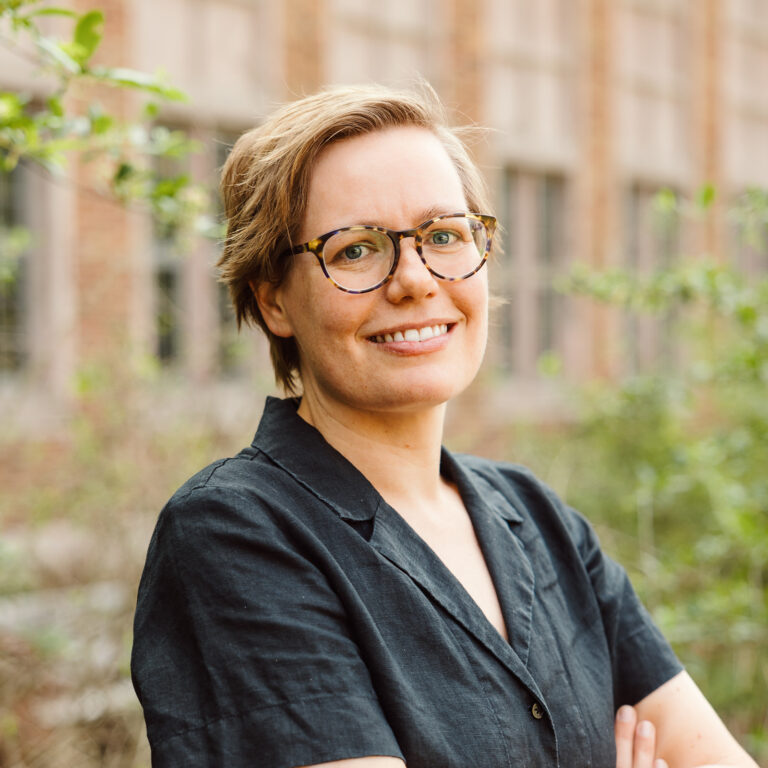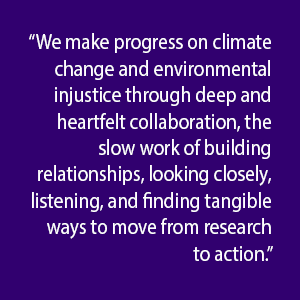Senior Research Affiliate, UW
Stephanie Carlisle is an architect and environmental researcher whose work investigates the interaction between the natural and built environment, including embodied carbon, life cycle assessment (LCA), urban ecology, landscape performance, environmental justice, and material supply chains. Prior to joining the CLF, she was a Principal and environmental researcher at KieranTimberlake in the firm’s interdisciplinary research group. She is also a lecturer at the University of Pennsylvania Stuart Weitzman School of Design and a Co-Editor-In-Chief of Scenario Journal.
by Steph Carlisle
The story of embodied carbon is the story of the entire built environment: of land management and extraction, of global markets and labor, culture and technology, craft and innovation. Increasingly, the AEC community has begun to reckon with the extent to which we are driving our global climate crisis. The real question is, how will this knowledge change the way we design and build? What tools and structural changes must we make to decarbonize the building sector? What levers can we pull that will support radical, systemic change?
I have spent the last decade as an environmental researcher, architect, and educator, examining the intersection of buildings and the environment. This research has led me to some incredible places: building housing prototypes to tackle coal-driven pollution and exploring radical decarbonization in Mongolia; exploring the linkage between rural economy, landscape transformation and cement production in Colombia; mapping the experience and movement of patients and caregivers in a chaotic emergency department in Philadelphia; learning from activists and engineers building decentralized renewable energy projects as a radical expression of energy democracy in Puerto Rico. These projects have taught me that the way we make progress on addressing climate change and environmental injustice is through deep and heartfelt collaboration. Through the slow work of building relationships, looking closely, listening, and finding tangible ways to move from research to action.
Ever since graduate school, I have searched for ways in which architects could take on more agency and responsibility for their climate decisions. I first became fascinated with the process of life cycle assessment while doing my graduate work in urban ecology and environmental management at the Yale School of Forestry. Frustrated by the lack of targeted LCA tools for the design community and its over-reliance on an outdated model of sustainability thinking, I joined KieranTimberlake’s research group and began work on developing tools, data and methods that would allow designers to engage with environmental impact data directly during the design process. That project grew into Tally, a life cycle assessment tool and database of building materials and assemblies, now used by thousands of architects and engineers addressing climate change on their projects.
In the last decade, I have watched the topic of embodied carbon move from a marginal, technical niche to an issue central to the ethical implications of architectural practice. I’ve been lucky to join a diverse community of architects, engineers, climate scientists, environmental communicators, software engineers, policy experts, manufacturers, and others across the AEC industry committed to this transformation—all of whom recognize that this project is larger than any one building, any one firm, or even any one discipline. While there has been some progress in increasing carbon literacy in the design community, if we are to meet global carbon reduction targets, we must rapidly accelerate this work. Decarbonization strategies and analysis capabilities cannot reside solely within the domain of a small number of design practices and projects. The study of embodied carbon cannot remain a theoretical or academic pursuit but must become part of normative, ethical design practice.
Meeting our decarbonization targets and averting the most catastrophic impacts of climate change will require both innovative technical research, as well as whole-society transformation. At the CLF, I am happy to be able to work on both sides of the equation: technical research to support the AEC industry, and climate policy and communication to help spread the message and empower change.

Stephanie Carlisle
